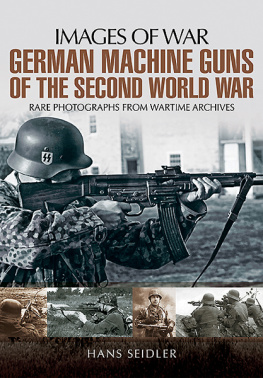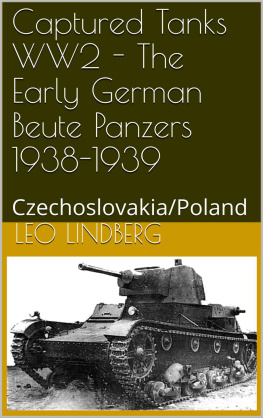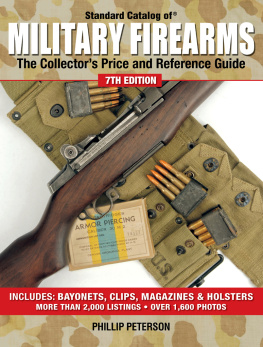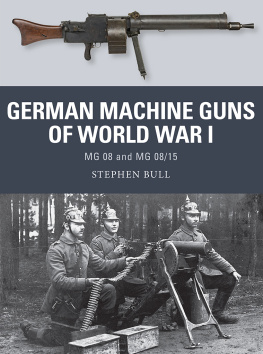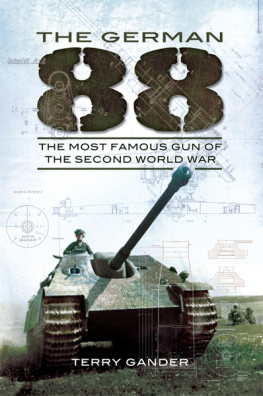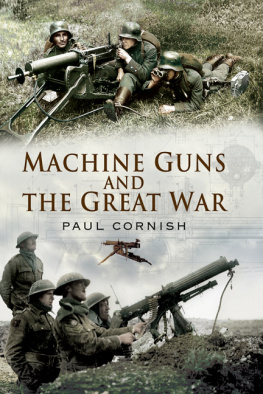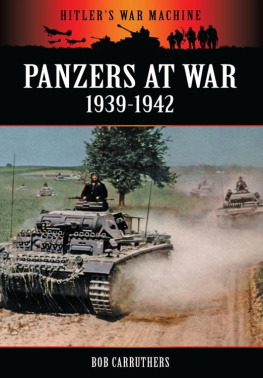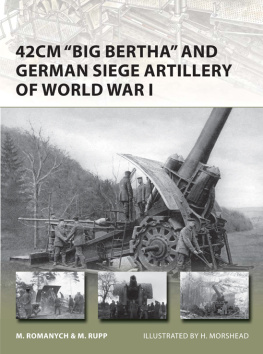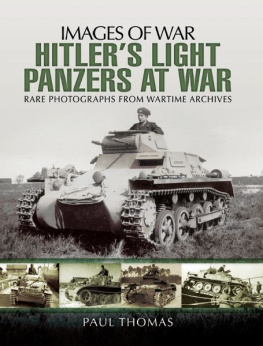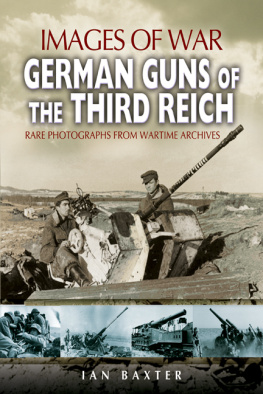First published in Great Britain in 2013 by
PEN & SWORD MILITARY
An imprint of
Pen & Sword Books Ltd
47 Church Street
Barnsley
South Yorkshire
S70 2AS
Copyright Hans Seidler, 2013
ISBN 978-1-78159-273-1
PDF ISBN: 978-1-47382-939-8
EPUB ISBN: 978-1-47382-853-7
PRC ISBN: 978-1-47382-896-4
The right of Hans Seidler to be identified as author of this work has been asserted by him in
accordance with the Copyright, Designs and Patents Act 1988.
A CIP catalogue record for this book is available from the British Library.
All rights reserved. No part of this book may be reproduced or transmitted in any form or by any
means, electronic or mechanical including photocopying, recording or by any information storage
and retrieval system, without permission from the Publisher in writing.
Typeset by Concept, Huddersfield, West Yorkshire
Printed and bound in England by CPI Group (UK) Ltd, Croydon, CR0 4YY.
Pen & Sword Books Ltd incorporates the imprints of Pen & Sword Archaeology, Atlas, Aviation,
Battleground, Discovery, Family History, History, Maritime, Military, Naval, Politics, Railways, Select,
Social History, Transport, True Crime, and Claymore Press, Frontline Books, Leo Cooper,
Praetorian Press, Remember When, Seaforth Publishing and Wharncliffe.
For a complete list of Pen & Sword titles please contact
PEN & SWORD BOOKS LIMITED
47 Church Street, Barnsley, South Yorkshire, S70 2AS, England
E-mail:
Website: www.pen-and-sword.co.uk
Contents
Chapter One
The Blitzkrieg Years, 193940
Chapter Two
Russia, 1941
Chapter Three
Offensives in the East, 1942
Chapter Four
Year of Reckoning, 1943
Chapter Five
End Game, 194445
Appendix I
Main German Machine Guns, 193945
Appendix II
Personal Equipment & Weapons
Appendix III
Standard German Infantry Divisions
Appendix IV
Typical German Infantry Regiments, 194143
Appendix V
Typical German Infantry Regiments, 1944
Appendix VI
German Grenadier Regiments, 194445
Introduction
U sing over 220 rare and unpublished photographs together with detailed captions and accompanying text, this book provides a unique insight into German weaponry from early blitzkrieg campaigns through to the final demise of the Nazi empire. German Machine Guns of the Second World War is a comprehensively illustrated record of the German war machine between 1939 and 1945. Many of the photographs originate from the albums of individuals who took part in the war. The book analyses the development of the machine gun and describes how the Germans utilized weapons such as the MG34 and the much-vaunted MG42 in both offensive and defensive roles, supported by a host of other machine guns such as the MP38/40. The following material depicts how these formidable weapons were used in the fight against an ever-increasing enemy threat.
The Machine Gun
The correct term for a machine gun is a fully automatic mounted or portable firearm which is designed to fire bullets in rapid succession either from a magazine or ammunition belt. These weapons that can often fire rounds of more than several hundred in one minute are categorized generally as machine guns, submachine guns or automatic cannons. A machine gun can be used either in a heavy or light role in combat. In its light role it can be carried into action and fired, or moved to a position and placed on the ground supported by a bipod and then fired. In its heavy role it is generally carried and then attached to a fire mount, such as a tripod or a sustained fire mount, and then used in its fixed offensive or defensive position. Submachine guns on the other hand are hand-held small portable automatic weapons for personal defence, or may be used for short-range combat firing pistol-calibre rounds. As for the difference between machine guns and auto-cannons, this is based on calibre, the latter often firing from a calibre larger than 16mm. These large-calibre cannons often fire explosive rounds. While they differ from machine guns, they share the same characteristic of a very high ratio of barrel length to calibre (i.e. a long barrel for a small calibre).
A machine gun is primarily designed to fire while the user holds the trigger down. In this position the user, or machine-gunner, is able to provide continuous automatic fire for as long as there is sufficient ammunition to feed his weapon. The machine-gunner can also just use frequent bursts of fire, and hold the trigger for longer more sustained aggression against a suspected target. Machine-gunners were mainly used on the battlefield against unprotected or lightly protected personnel, or to provide adequate suppressive fire.
Since the trenches of the First World War, the machine gun has provided soldiers with effective offensive and defensive fire-power that could ultimately cause the enemy considerable damage. The German army for one saw the machine gun as one of the most important weapons in its arsenal, and during the early 1930s began designing an example that would arguably become one of the greatest machine guns of the Second World War. The Machine Gun 34 or MG34 was one German weapon manufactured in Germany that became the finest machine gun ever produced in the world and was deployed throughout the German army. The MG34 was based on a 1930 Rheinmetall design, the MG30, which was adapted and modified by Heinrich Vollmer of Mauser Industries. Vollmer increased the rate of fire, designing a feed mechanism to accept either drum magazines or belt ammunition. He also manufactured a brilliant double-crescent trigger which dictated either semi-automatic or fully automatic firing modes.
On the battlefield the machine gun operated magnificently in both offensive and defensive roles. In offensive applications the gunner, normally in a mobile or light MG role, used a drum magazine that could hold either fifty or seventy-five rounds of ammunition. In a stationary defensive role, the heavy MG role, the machine gun could easily be mounted effectively on a bipod or tripod and fed by an ammunition belt. Belts were carried in boxes of five, each belt containing fifty rounds. Belt lengths could be linked for sustained fire, and in this situation the ammunition barrels could be quickly changed. During these heavy sustained MG fire missions, the gun required more than one operator.
Apart from the MG34, another machine gun made its debut before the outbreak of the Second World War: the MP38. The MP was designated as a Maschinenpistole, literally Machine Pistol. It was often called Schmeisser, these submachine guns being developed in Germany and used extensively by the Fallschirmjger (paratroopers), tank crews, squad and platoon leaders. The MP38 was an open-bolt, blowback-operated fully automatic weapon. Because of its low rate of fire, the trigger allowed the gun to operate with single or sustained fire. Out in the field the MP38 was a very effective weapon and could be used in a number of offensive and defensive roles.
Chapter One
The Blitzkrieg Years 193940
B y the time war broke out in September 1939, hundreds of MP38s and MG34 machine guns had been manufactured. When the attack came in Poland both the MG34 and MP38 proved their worth and were used extensively against their Polish foe.
Throughout the first days of the Polish campaign, the German machine-gunner strove to achieve its objectives. The entire thrust of the German army was swift and decisive. The fruits of the dash east were intoxicating for the men riding the tanks and trucks. An almost unopposed advance across country against a disorganized jumble of Polish units retreating with all that could be saved and salvaged had instilled eager enthusiasm into every German soldier. However, following this initial excitement of battle, the rapid capture of the first towns and villages, the dramatic seizure of heavily fortified positions and the clearance of the frontier area, the mood among the men slowly changed as certain parts of the front stiffened and congealed. They quickly began to learn the cost of conflict. In some areas the Germans found the quality of their opposition extraordinarily uneven. At one moment a handful of them were receiving wholesale enemy surrenders, while in other sectors an entire division found itself being held up by the stubborn resistance of a company of Polish troops with a detachment of artillery and anti-tank guns. Yet, despite the determination of these brave Polish soldiers, the devastating efficiency of Blitzkrieg had arrived.
Next page
